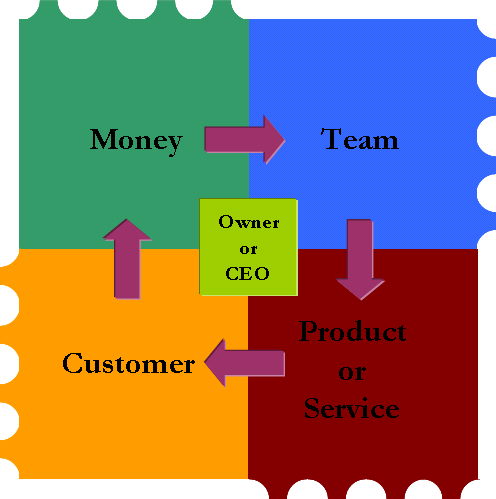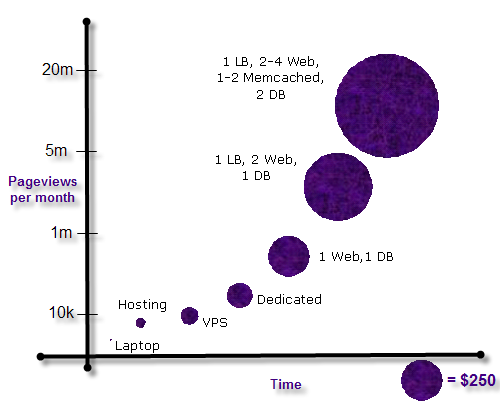In the summer of 2007, the moment Sameer & Nandini’s last startup Madhouse got acquired, another one started brewing in their heads. This time the plan was bigger and the idea was beyond running a startup, but kick-starting several of them. One year later after the acquisition, Morpheus was born with Instablogs as the first company in the portfolio, with other kick-ass companies being added to the “gang” in the subsequent 18 months.

Aptly, Morpheus was named after the greek god of dreams; to a more real (fictional to some) world captain of Nebuchadnezzar who brings the dreams back to the residents of the last human city.
Then in the 2009 summer, I joined. This summer we are adding another 7-8 startups (names to be announced on 10th June) which brings further variety in our portfolio from automotive, eco-textile, health-care to touch computing.
This weekend from 10th – 13th we are doing our 1st ever startup gurukul on the outskirts of Bangalore, where we are bringing the founders of our portfolio companies under one roof and kicking it off with “Apuroop” — a demo day. At Apuroop, Morpheus companies will be doing 5 minutes show & tell to investors & media.
We are also delighted to partner with Sequoia Capital who are supporting us in our initiative and sponsoring the gurukul.
We have come a long way since our nimble start where we were doing just mentorship to now where we are also investing a small amount of INR 5 Lakhs in each of the startups. There are more exciting things coming out of our bag, controlling my excitement, we would unravel them as time passes.
Thanks for participating with us!
 The chart shows four tangible entities which are the main constituents of a business. Each constituent is in it’s own quadrant.The inbound arrow depicts movement or utilization of a resource. As owner/CEO, you create the business. The Team which you hire creates the product or service. This is consumed by a Customer which brings Money to the business. The Money in turn funds the Team. If the Team is weak or inefficient it would impact the product or service. Even more, an incompetent team may consume the money unwisely thus hampering the overall cycle of the business. Though the business revolves around the presence of the Owner/Founder/CEO, the continuum of the business is maintained by the efficiency of the team.
The chart shows four tangible entities which are the main constituents of a business. Each constituent is in it’s own quadrant.The inbound arrow depicts movement or utilization of a resource. As owner/CEO, you create the business. The Team which you hire creates the product or service. This is consumed by a Customer which brings Money to the business. The Money in turn funds the Team. If the Team is weak or inefficient it would impact the product or service. Even more, an incompetent team may consume the money unwisely thus hampering the overall cycle of the business. Though the business revolves around the presence of the Owner/Founder/CEO, the continuum of the business is maintained by the efficiency of the team. out wherever/whenever possible and making an ass out of myself at other times. From participating in mindless discussions to taking split-second leadership roles; to managing wherever required and at times staying out of the loop sipping beer at the poolside … and of course flirting occasionally (Don’t worry, my better half never reads this blog).
out wherever/whenever possible and making an ass out of myself at other times. From participating in mindless discussions to taking split-second leadership roles; to managing wherever required and at times staying out of the loop sipping beer at the poolside … and of course flirting occasionally (Don’t worry, my better half never reads this blog). way. The dream could be a INR 100 crore product or something as complex as an ERP on the web to a even more complicated, a Hospital Information Systems (.. search engines? they are easier to build these days).
way. The dream could be a INR 100 crore product or something as complex as an ERP on the web to a even more complicated, a Hospital Information Systems (.. search engines? they are easier to build these days). fixed after 15 phone calls only to be broken again. A non-delivery of 1Mbps Internet connection from Tata Indicom leads to only 75% of the subscription amount after several phone calls and 8 months of delays. God knows how much the cellular operators are cheating in billing for short minutes and dropped calls. Every month I get charged for roaming even when I haven’t left the home cellular network. The biggest grief is against some of the large public sector companies operating as corporations who do not even have a ‘tangible’ customer service line. The so called mega retail stores have the shoddiest of services without any accountability from the local Food & Drug or health departments/administration.
fixed after 15 phone calls only to be broken again. A non-delivery of 1Mbps Internet connection from Tata Indicom leads to only 75% of the subscription amount after several phone calls and 8 months of delays. God knows how much the cellular operators are cheating in billing for short minutes and dropped calls. Every month I get charged for roaming even when I haven’t left the home cellular network. The biggest grief is against some of the large public sector companies operating as corporations who do not even have a ‘tangible’ customer service line. The so called mega retail stores have the shoddiest of services without any accountability from the local Food & Drug or health departments/administration. As a Founder, CEO, whatever of the startup — one thing you would be doing in your journey would be
As a Founder, CEO, whatever of the startup — one thing you would be doing in your journey would be 